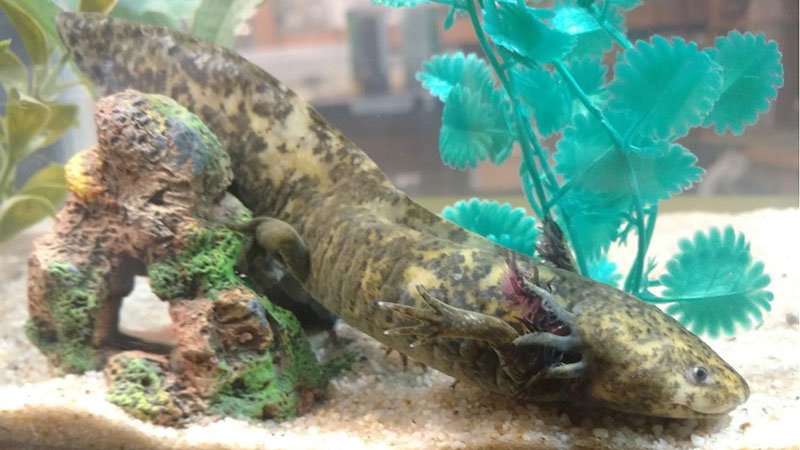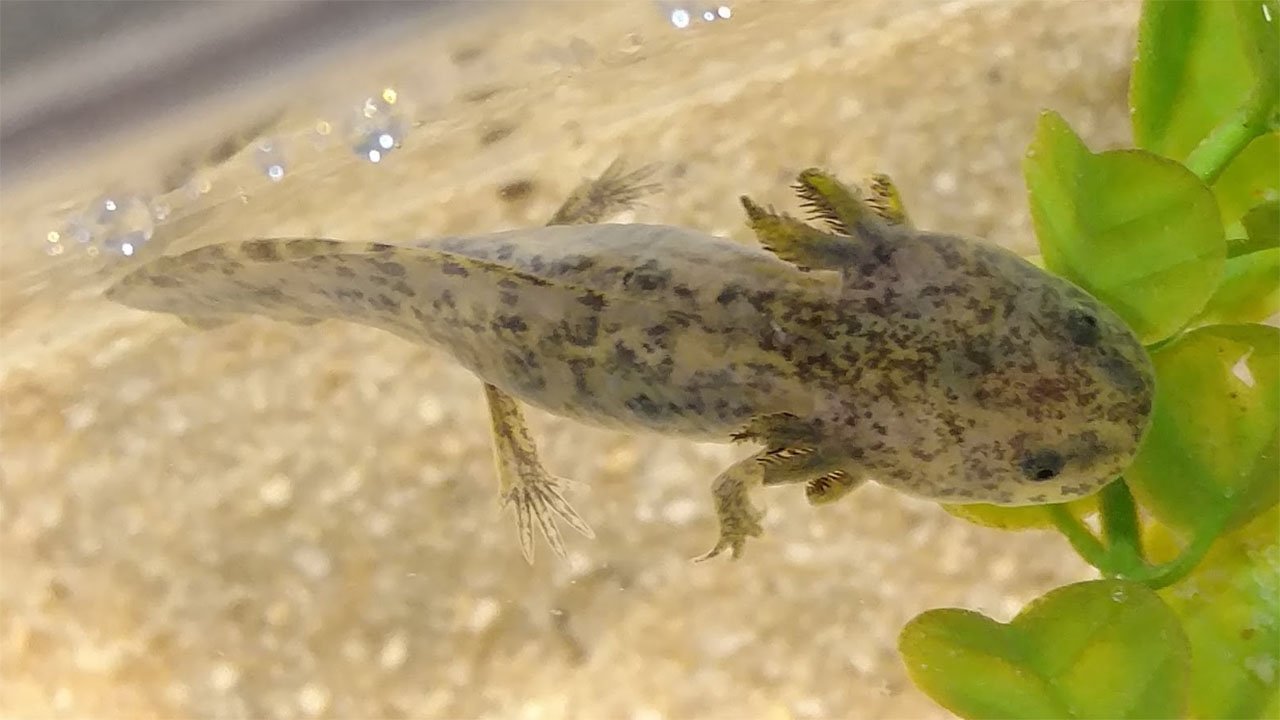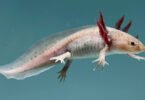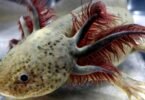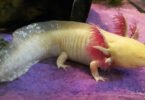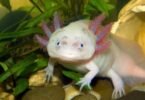Can you spot the unique traits of mosaic axolotl? Mosaic axolotls might not always grab your attention at first glance, but each one is distinct and deserves careful attention. Early recognition of their mosaic traits can be crucial for their well-being and survival. In this blog post, we will delve into a step-by-step guide on how to identify a mosaic axolotl.
When observing mosaic axolotls, look beyond just color differences. Key indicators include:
- Symmetry Violations
- Genetic Probability Violations
Most animals, including axolotls, typically show lateral symmetry, meaning both sides of their body share similar color patterns and growth rates controlled by their genetics. A mosaic axolotl is an intriguing case where one organism contains multiple types of genetically different cells, all originating from the same fertilized egg. This means they can display a mix of color patterns and growth rates. Mosaicism often leads to genetic patterns that deviate from traditional inheritance laws, as first described by Gregor Mendel.
Understanding these characteristics helps in appreciating mosaic axolotls’ unique nature and providing them with the right care and environment they need to thrive.
Table of Contents
How To Identify a Mosaic Axolotl
Lateral Growth Asymmetry
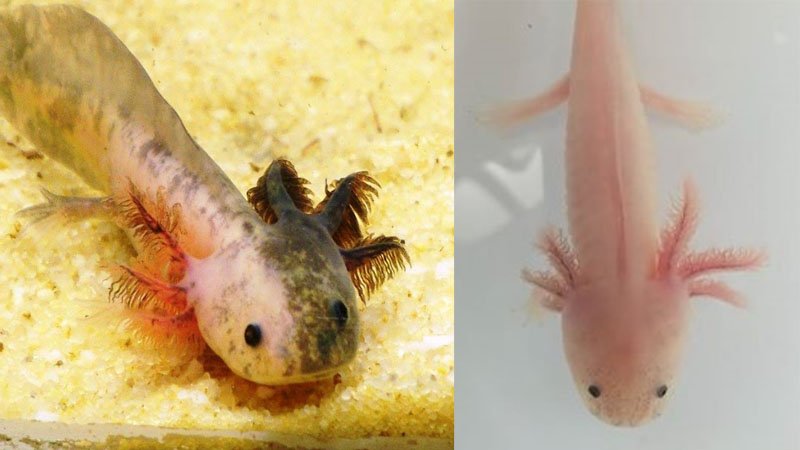
Pay attention to uneven gills, with one side smaller than the other, as this can be a simple, early sign of mosaicism in axolotls. In some mosaic individuals, this asymmetry might be pronounced enough to lead to health challenges. However, with proper care, even those with significant asymmetrical features can balance out as they grow older.
The above image on the left shows a Leucistic-Melanoid split mosaic axolotl displaying this kind of asymmetric growth. On the right, there’s a Leucistic-Leucistic split mosaic, also showing uneven growth.
Lateral Pattern Asymmetry
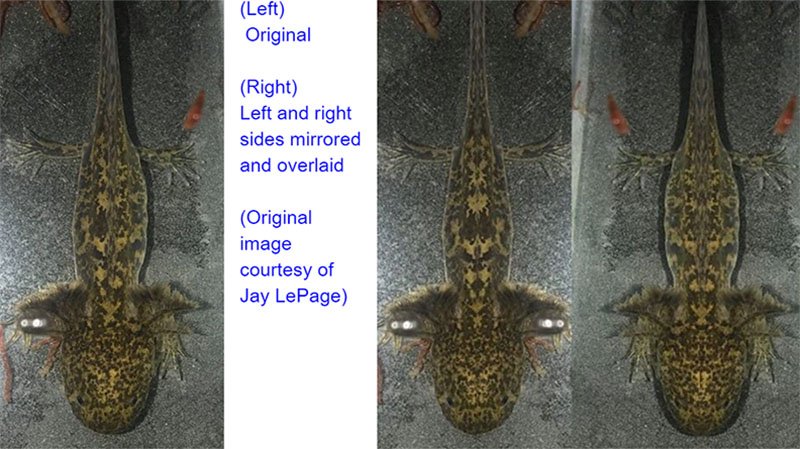
Identifying a mosaic axolotl can be straightforward when the differing cell populations exhibit distinct colors. However, the task becomes more challenging if both cell populations are of similar types, like wild-type or leucistic.
In axolotls, the development of iridophores (cells producing shiny pigments) also regulates the growth and distribution of melanophores (cells that produce dark eumelanin and brown/red pheomelanin). When iridophores are present, melanophores tend to cluster, forming patterns like spots, stripes, or bars. The exact pattern of these markings depends on chemical signals from other cells in the axolotl’s skin and nervous system. In typical axolotls, these signals are symmetrical, resulting in mirrored patterns on both sides of the body.
However, in a mosaic axolotl, the chemical signals from the different cell populations can vary significantly, leading to asymmetrical patterns on the right and left sides. Such asymmetry, a hallmark of mosaicism, may be evident early in the axolotl’s development, especially as it begins to produce its own pigments.
For instance, a wild-type mosaic might not be immediately recognizable until you compare the mirrored images of its left and right sides. When mirrored, these images might appear as entirely different animals, as demonstrated by the wild-type mosaic in the image above. This example shows how mosaicism can create unique and intriguing patterns, challenging our perceptions of symmetry in these fascinating creatures.
Functional Asymmetry
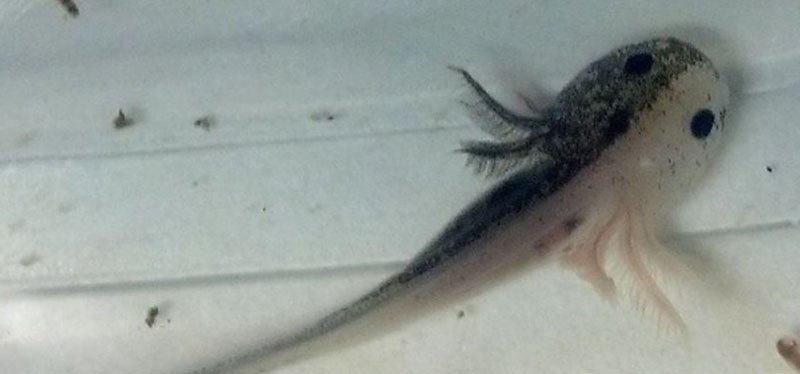
It’s common for mosaic axolotls to grow unevenly, which can lead to a slight curvature or bend in their body. Take Lokai, for instance – he usually bends towards the left when resting. This kind of consistent bending or leaning in a young axolotl, or floating with one side higher than the other, can be a telltale sign of mosaicism.
You might also observe that their legs move at different speeds on each side while swimming. This uneven movement often requires them to adjust their direction to swim straight continuously.
Interestingly, Lokai also exhibits another peculiarity: he has just two gill stalks on his left side. These physical quirks, while unique to each mosaic axolotl, are fascinating glimpses into how mosaicism can manifest in various aspects of their appearance and movement.
Genetic Improbability
In the 1860s, Gregor Mendel laid the foundation for genetics by uncovering the fundamental principles of gene inheritance. Through his experiments with pea plants, Mendel discovered that genes are transmitted from parents to offspring through a process akin to random chance, leading to predictable patterns in how traits are passed down. This concept is similar to rolling a six-sided dice; the outcome of each roll is random, but if you roll it many times, you’d expect each number, like the side with four dots, to appear approximately ⅙ of the time. These genetic ratios, Mendel found, remain the same and can be easily predicted and understood.
For Example:
If you cross an axy that is het for albino with an albino, half of the babies will be albino.
Ratio = 1:1
If you cross two het albino leucistic axies, one-fourth of the babies will be albino, and all babies will be white:
Ratio = 3:1
If you cross two wild-type axies that are het albino and het copper, 9/16 will be wild-type, 3/16 will be Copper, 3/16 will be gold albino, and 1/16 will be copper albino (which looks like any other albino).
Ratio = 9:3:4
Common “Mendelian ratios” are 1:1, 3:1, 9:3:3:1, 9:3:4, 9:6:1, and 12:3:1. These ratios are probabilities, not guarantees.
The larger the clutch produced, the closer it will tend to match the predicted ratio, but it is rare that the offspring come out in precisely the expected ratio. But what if you get a baby that simply isn’t predicted by the rules of genetics? What if there simply is no “Mendelian ratio” at all?
For example, what if you get 150 babies, and all are dark wilds or mels but two, which are very light? 2/150 (or 1/75 if you’re a stickler for reducing fractions) simply does not fit any of the Mendelian ratios. Those two are clearly violating the rules! Those two are, almost certainly, mosaics :
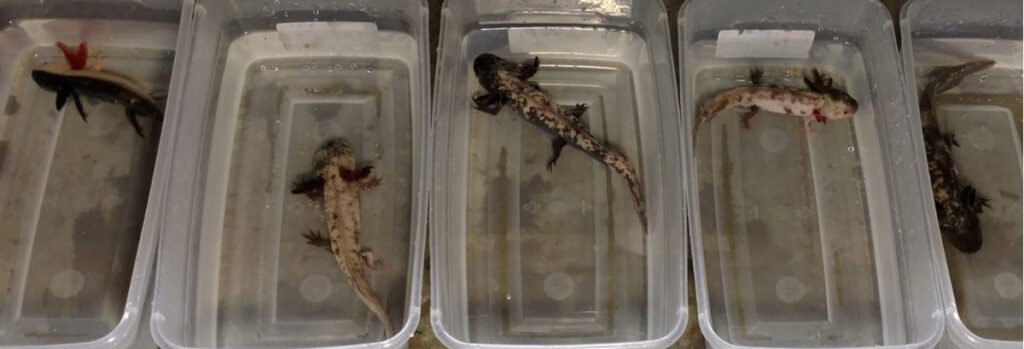
Look for the Impossible
Mosaic axolotls aren’t always characterized by dramatic “split” or “mottled” appearances. In fact, some of the most beautiful mosaics have subtler variations, which might be hard to spot without a basic understanding of genetics.
For instance, one of my favorite axolotls from the 2020 breeding season has a more understated mosaic pattern.
The mother of this particular axolotl is a “starburst” wild type, genetically homozygous for the “dark” trait and heterozygous for melanoid, meaning she carries one melanoid gene and one non-melanoid gene. She doesn’t possess other recessive genes related to color. Her Genotype: DID M/m A/A C/C Ax/Ax gfp/gfp.
On the other hand, the father is a GFP high-iridophore gold albino. Like the mother, he is homozygous for Dark, a common trait in high-iridophore Golds, but he does not carry melanoid or leucistic genes. This pairing of parents with distinct genetic backgrounds results in offspring with subtly unique mosaic patterns, showcasing the fascinating complexity of axolotl genetics. His Genotype: D/D M/M a/a C/C Ax/Ax GFP/gfp.
So what is the baby? Impossible.
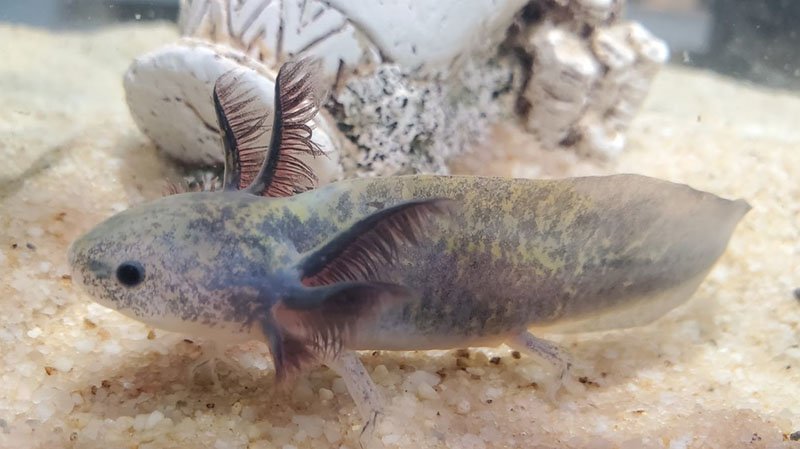
The presence of black eyes without iridophores in this axolotl could indicate that it is either melanoid or axanthic. However, it can’t be melanoid since melanoid is a recessive trait, and only the mother carries the gene. Therefore, at most, this baby axolotl could be a carrier (heterozygous) for melanoid, not displaying the trait itself.
The yellow-gold patches observed on its dorsal fin and sides are due to xanthophores, which eliminate the possibility of it being axanthic. Additionally, neither parent has the axanthic gene. The broad white areas on its face and belly might suggest it’s leucistic (white), but this is also unlikely because neither parent carries the leucistic gene.
Considering the mother doesn’t have the albino gene, the white areas on the axolotl aren’t due to albinism, meaning the axolotl could only be a carrier (heterozygous) for albino, not expressing the trait visibly.
Mosaics result from cell-division “errors” that produce daughter cells with decidedly strange genotypes. In these cells, the genes responsible for color prompt the production of signaling proteins that instruct the chromatophores (color cells) on their action. Sometimes, these signals conflict, leading to a fascinating array of skin patches where coloration appears mixed or inconsistent. This can even extend to the internal organs, creating a unique pattern of coloring that’s distinctly mosaic.
One intriguing method to identify these “subtle” mosaics is to look for offspring that defy conventional genetic expectations, the kind that would have baffled Gregor Mendel, the father of modern genetics. These mosaic axolotls can display color combinations and patterns that seem genetically improbable, adding a layer of mystery and excitement to the breeding and observation of these creatures.
As an example, here’s an image of the baby axolotl shown in the featured image above. It is now fully grown, showcasing the distinct changes and development typical of mosaic axolotls.
